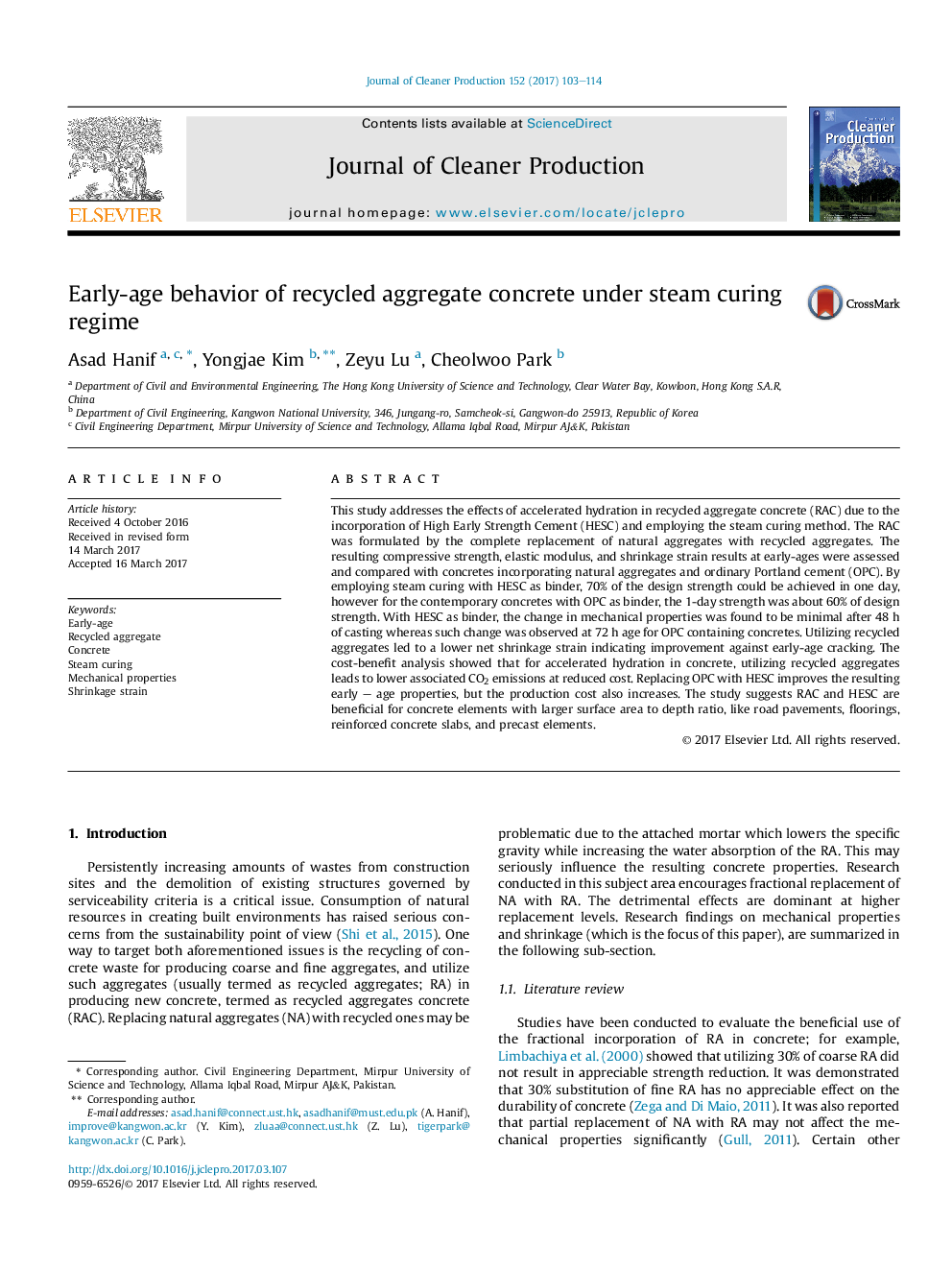| Article ID | Journal | Published Year | Pages | File Type |
|---|---|---|---|---|
| 5481285 | Journal of Cleaner Production | 2017 | 12 Pages |
Abstract
This study addresses the effects of accelerated hydration in recycled aggregate concrete (RAC) due to the incorporation of High Early Strength Cement (HESC) and employing the steam curing method. The RAC was formulated by the complete replacement of natural aggregates with recycled aggregates. The resulting compressive strength, elastic modulus, and shrinkage strain results at early-ages were assessed and compared with concretes incorporating natural aggregates and ordinary Portland cement (OPC). By employing steam curing with HESC as binder, 70% of the design strength could be achieved in one day, however for the contemporary concretes with OPC as binder, the 1-day strength was about 60% of design strength. With HESC as binder, the change in mechanical properties was found to be minimal after 48Â h of casting whereas such change was observed at 72Â h age for OPC containing concretes. Utilizing recycled aggregates led to a lower net shrinkage strain indicating improvement against early-age cracking. The cost-benefit analysis showed that for accelerated hydration in concrete, utilizing recycled aggregates leads to lower associated CO2 emissions at reduced cost. Replacing OPC with HESC improves the resulting early - age properties, but the production cost also increases. The study suggests RAC and HESC are beneficial for concrete elements with larger surface area to depth ratio, like road pavements, floorings, reinforced concrete slabs, and precast elements.
Related Topics
Physical Sciences and Engineering
Energy
Renewable Energy, Sustainability and the Environment
Authors
Asad Hanif, Yongjae Kim, Zeyu Lu, Cheolwoo Park,
